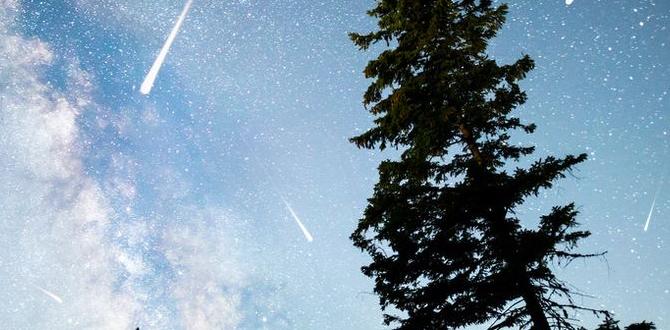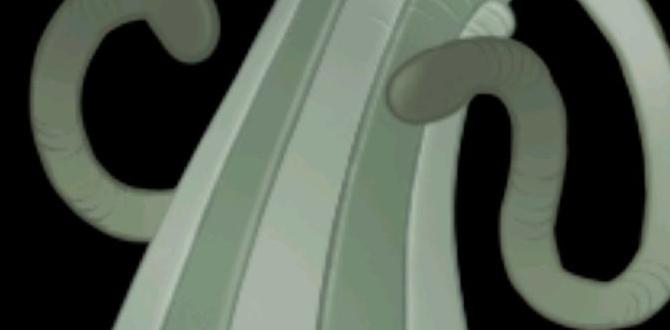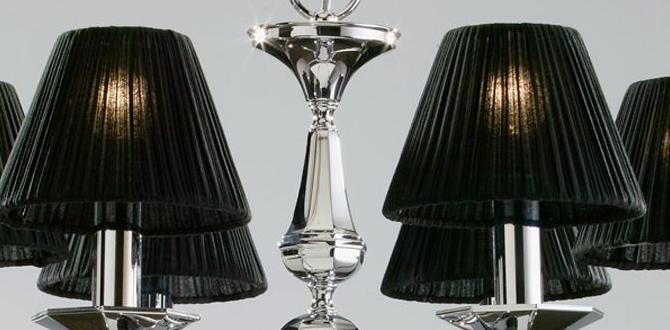Have you ever wondered when to look up at the night sky for falling stars? Meteor showers happen at certain times each year, and they can be quite a sight! Everyone loves catching a glimpse of these sparkling streaks across the darkness.
Imagine you’re sitting outside with your friends. The air is cool, and the stars are bright. Suddenly, a flash of light zips across the sky. Is it a shooting star? Nope! It’s a meteor during a shower.
But when are these magical moments? Each meteor shower has its special time. For example, the Perseids appear in August, while the Leonids light up November skies. Knowing when these meteor showers happen can make your stargazing more exciting.
Get ready to explore the skies! Let’s find out when these amazing displays of nature will light up your nights.
When Are The Meteor Showers: Your Ultimate Viewing Guide

When Are the Meteor Showers?
Meteor showers happen when Earth moves through clouds of tiny rocks in space. Many people love to watch this spectacular show! The most well-known meteor showers are the Perseids in August and the Geminids in December. These events peak on specific nights, making it ideal to grab a blanket and look up at the sky. Did you know you can see over 100 shooting stars an hour during peak times? Be sure not to miss out on this stunning display!Understanding Meteor Showers
Definition and origin of meteor showers. The science behind meteoroids entering Earth’s atmosphere.Meteor showers are amazing events when many meteoroids enter Earth’s atmosphere. These meteoroids are tiny pieces of rock or metal. When they burn up in our sky, they create bright streaks called meteors. Most meteors come from comets or asteroids. Meteor showers happen at specific times of the year, making them even more exciting to watch.
- Meteor showers occur when Earth passes through debris from comets.
- The speed of meteoroids can reach up to 45 miles per second.
- Meteor showers can create beautiful displays in the night sky.
How do meteor showers happen?
Earth moves through a path filled with tiny bits of space rock, causing meteor showers. These bits burn up, leaving sparkling trails. Watching these is like a starry fireworks show!
Best Viewing Practices
Tips for finding the best location to watch meteor showers. Recommended gear and preparation for an optimal viewing experience.To see meteor showers, pick a good spot away from city lights. A dark location lets you see more shooting stars. Bring a blanket to lie on or a chair to sit back and relax. Check the weather forecast to find a clear night for viewing.
- Arrive early to find your perfect spot.
- Get comfortable with warm clothes and snacks.
- Use binoculars or a telescope for a better view.
Bring a flashlight with a red filter. This helps your eyes adjust to the dark. Enjoy the show with friends and family. Share your excitement as you spot each meteor!
What is the best time to watch meteor showers?
The best time is usually after midnight. During this time, you’ll see more meteors. The peak nights are also great! The best meteor showers happen in August, December, and April.
2023 Meteor Shower Calendar
Monthly breakdown of meteor shower dates and peak times for 2023. Notable meteor showers to watch out for this year.Ready to catch some shooting stars? Here’s the lowdown on meteor showers for 2023! You won’t want to miss these spectacular displays lighting up the night sky. Set your calendars for these exciting dates:
| Month | Meteor Shower | Peak Dates | Best Viewing Time |
|---|---|---|---|
| January | Quadrantids | January 3-4 | Midnight to dawn |
| August | Perseids | August 12-13 | Before dawn |
| December | Geminids | December 13-14 | All night |
Keep a lookout for the Geminids in December; it’s the star of the show! With up to 120 meteors per hour, it’s like a firework display, minus the bang! Get comfy, grab some snacks, and enjoy the celestial show!
Impact of Weather and Light Pollution
How weather conditions affect meteor visibility. The influence of light pollution on meteor observation.Weather plays a big role in how well we can see meteors. If it’s cloudy or raining, those shooting stars may hide behind the clouds, making it hard to spot them. On a clear night, they shine like grandma’s favorite silverware. Light pollution is another sneaky thief that steals our view. The glow from city lights can drown out those dazzling meteors. It’s like trying to find a firefly at a disco party! Keep that in mind next time you plan your meteor watching adventure.
| Weather Conditions | Visibility Impact |
|---|---|
| Clear Skies | Best Visibility |
| Cloudy | Poor Visibility |
| Rain | No Visibility |
| Light Pollution | Hides Meteors |
Stargazing Techniques and Resources
Techniques for maximizing meteor sighting during showers. Recommended apps and websites for tracking meteor showers and sky events.Want to catch those dazzling meteor showers? First, pick a dark spot away from city lights. Lying back on a comfy blanket works wonders for your neck! Bringing snacks can make it feel like a camping trip—who doesn’t love popcorn while stargazing? Technology can help, too! Check out apps like SkySafari or websites like NASA’s meteor shower calendar. They keep you updated on when to look up. Just remember: meteors are fast, so blink and you might miss them!
| Resource | Type | Features |
|---|---|---|
| SkySafari | App | Stargazing information, notifications for events |
| NASA Meteor Shower Calendar | Website | Timings and details of upcoming showers |
| Star Walk 2 | App | Real-time sky map and meteor alerts |
Myths and Legends Surrounding Meteor Showers
Cultural significance of meteor showers across different civilizations. Folklore and myths related to meteor showers.Meteor showers have inspired many myths and legends throughout history. Different cultures viewed them as celestial signs or messages from the gods. For example, ancient Greeks believed they were the tears of the gods or souls ascending to the heavens. In some Native American tribes, these showers represented the spirits’ journey. In China, they were seen as good luck. Who wouldn’t want a streak of shooting stars to wish on? It’s like a cosmic fireworks display that makes us feel connected to something greater!
| Civilization | Belief |
|---|---|
| Greek | Tears of the gods |
| Native American | Spirits’ journey |
| Chinese | Good luck sign |
These stories not only explain the wonders of the night sky but also connect us to our roots. Just like in life, meteor showers remind us to enjoy the fleeting moments. Who knows, you might even catch a glimpse of a falling star while sitting under the open sky!
FAQs About Meteor Showers
Common questions regarding meteor showers answered. Tips for firsttime meteor shower watchers.Many people wonder about meteor showers. The most common question is, “What are meteor showers?” These are amazing displays of shooting stars that happen when Earth passes through space debris. ** They often peak at specific times each year, so planning is key!** If you’re a first-time watcher, lie on your back, bring warm drinks, and don’t forget snacks—because who doesn’t want to munch while gazing at the stars? Just remember, if you see something zoom by, it’s not a UFO; it’s probably a comet’s leftovers!
| Question | Answer |
|---|---|
| When do meteor showers occur? | They typically occur several times a year, with major events known to peak in August and December. |
| What should I do to watch? | Find a dark spot, away from city lights, and get comfy! |
Conclusion
In summary, meteor showers happen at specific times each year. Popular ones include the Perseids in August and the Geminids in December. You can enjoy these events by finding a dark place to watch the sky. Remember to check the dates for the best viewing times. Let’s explore the wonders of meteor showers together and look up for shooting stars!FAQs
Sure! Here Are Five Related Questions On The Topic Of Meteor Showers:Sure! Meteor showers happen when tiny pieces of rock and dust from space hit our atmosphere. They burn up and create bright streaks of light. You can see them at certain times of the year. To enjoy them, find a dark place away from city lights. Look up at the sky and watch for shooting stars!
Sure! Just let me know the question you’d like me to answer, and I’ll help you with it.
What Are The Major Meteor Showers Observed Throughout The Year?The major meteor showers we see each year are the Quadrantids, Lyrids, Eta Aquarids, and Perseids. The Quadrantids happen in January. The Lyrids light up the sky in April. The Eta Aquarids occur in May, and the Perseids are best to see in August. These showers happen when Earth passes through bits of space dust from comets.
How Can I Best Prepare For Viewing A Meteor Shower?To prepare for a meteor shower, find a dark place away from city lights. Check the time and date so you know when to watch. Bring a blanket or a chair to sit comfortably. Don’t forget snacks and drinks to make it fun! Finally, look up and enjoy the show!
What Are The Specific Peak Dates For The Perseids And Leonids Meteor Showers?The Perseids meteor shower peaks around August 12 and 13 each year. This is when you can see the most shooting stars. The Leonids peak around November 17 and 18. So, remember these dates to enjoy the sky show!
How Does The Moon’S Phase Affect The Visibility Of Meteor Showers?The moon’s phase can change how well we see meteor showers. When the moon is full, its bright light can make it hard to see meteors. But during a new moon, the sky is darker. This helps us see more shooting stars. So the best time to watch meteor showers is when the moon is not too bright!
What Causes Meteor Showers And Where Do They Originate From?Meteor showers happen when tiny pieces of dust and rocks enter Earth’s atmosphere. These bits come from comets or asteroids. As they zoom through the sky, they burn up and create bright streaks we see as shooting stars. We can see meteor showers at certain times of the year when Earth passes through these space debris trails.








